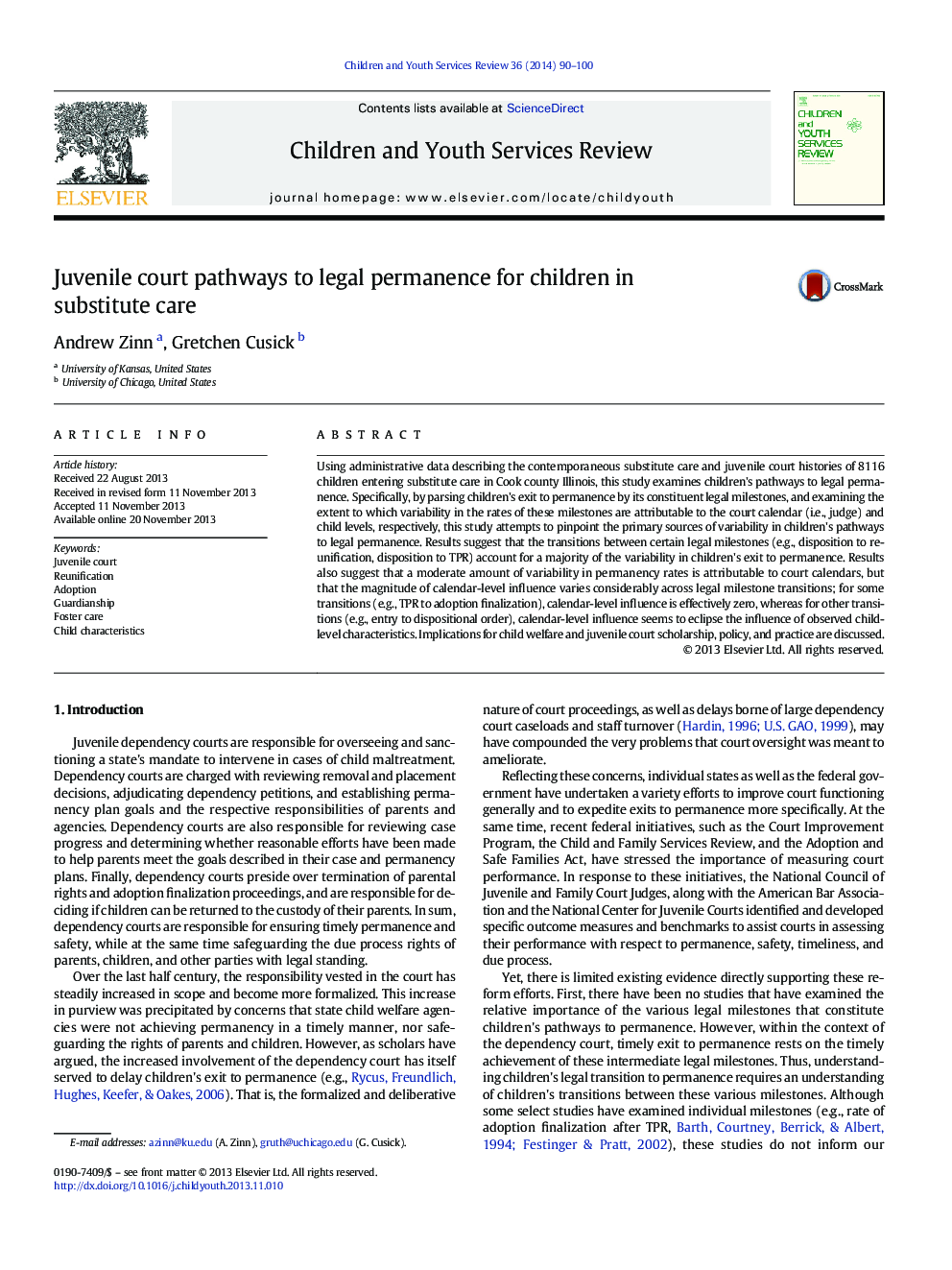| Article ID | Journal | Published Year | Pages | File Type |
|---|---|---|---|---|
| 346109 | Children and Youth Services Review | 2014 | 11 Pages |
•Moderate amount of variability in permanency rates is attributable to court calendars.•Some legal milestones account for a larger share of variability in permanency rates.•Permanency variability attributable to court calendars varies by milestone.•Permanency variability attributable to specific child attributes varies by milestone.
Using administrative data describing the contemporaneous substitute care and juvenile court histories of 8116 children entering substitute care in Cook county Illinois, this study examines children's pathways to legal permanence. Specifically, by parsing children's exit to permanence by its constituent legal milestones, and examining the extent to which variability in the rates of these milestones are attributable to the court calendar (i.e., judge) and child levels, respectively, this study attempts to pinpoint the primary sources of variability in children's pathways to legal permanence. Results suggest that the transitions between certain legal milestones (e.g., disposition to reunification, disposition to TPR) account for a majority of the variability in children's exit to permanence. Results also suggest that a moderate amount of variability in permanency rates is attributable to court calendars, but that the magnitude of calendar-level influence varies considerably across legal milestone transitions; for some transitions (e.g., TPR to adoption finalization), calendar-level influence is effectively zero, whereas for other transitions (e.g., entry to dispositional order), calendar-level influence seems to eclipse the influence of observed child-level characteristics. Implications for child welfare and juvenile court scholarship, policy, and practice are discussed.
